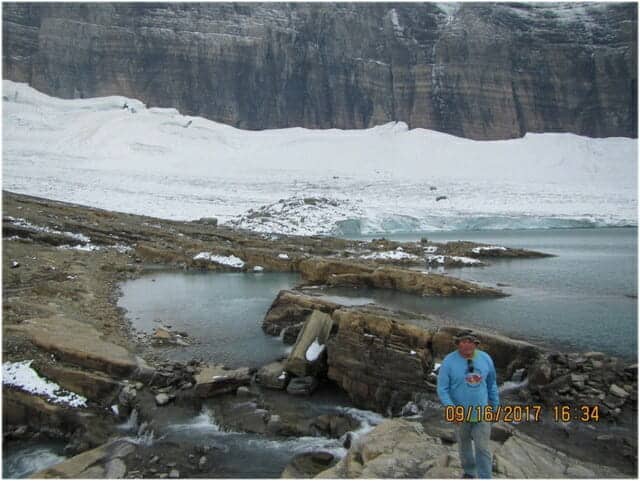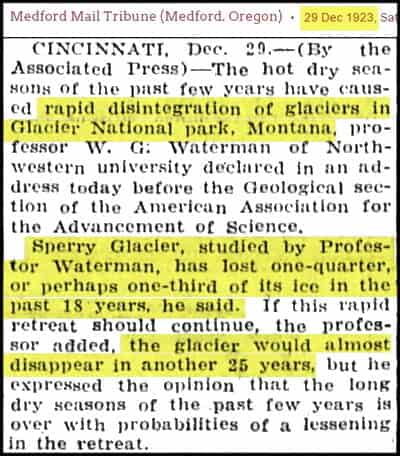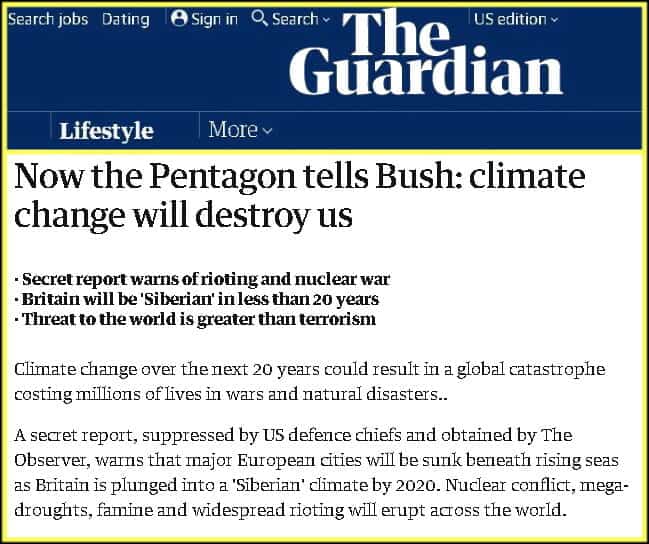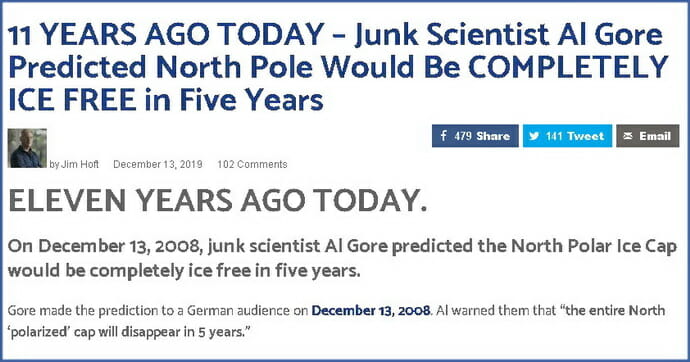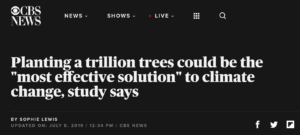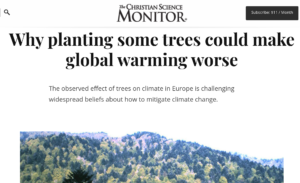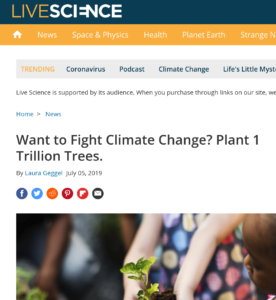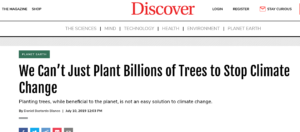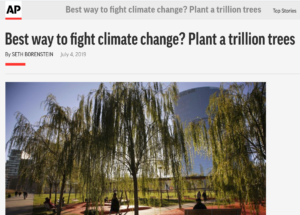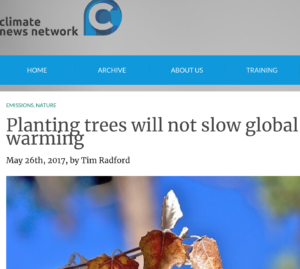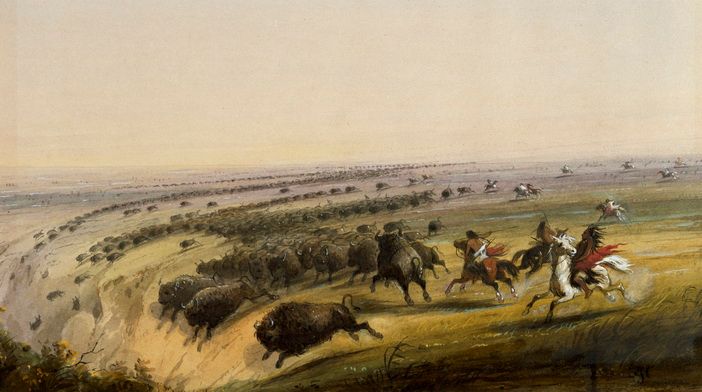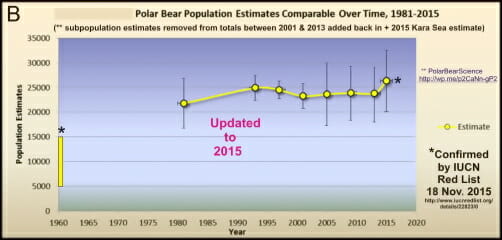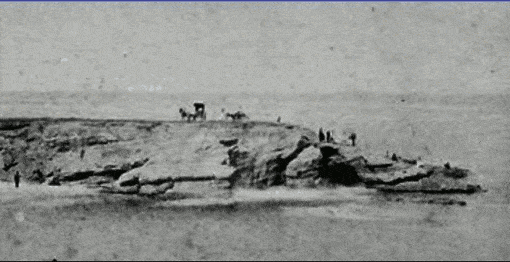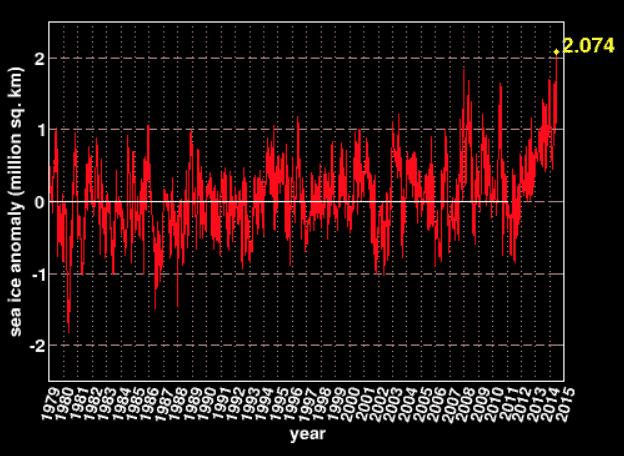If you truly want to save the planet from global warming, there’s one energy source that can do it. It’s not wind or solar. It’s not coal, oil or natural gas, either. So what is it? Michael Shellenberger, founder of Environmental Progress, has the answer in this important video. (I highly recommend watching PANDORA’S PROMISE)
Global Warming

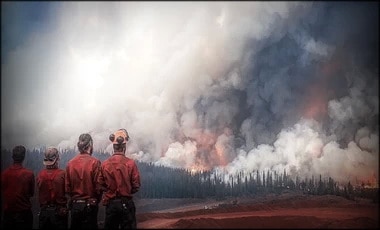
California Wildfires… Policy vs. Rhetoric (Tom McClintock/John Kobylt)
(2018) California’s leaders are promoting the idea that the state’s in a “new normal” of more extreme wildfire, but fire scientists say it doesn’t have to stay that way, even in the face of a climate that’s getting warmer.
I posted previously on related topics for the interested:
- Are the Cal Fires Driven by Climate Change and Capitalism?
- Another Year Of Aussie Fire Nonsense
- Amazon Fires (Climate Depot)
(This is mainly a government issue – federal and state) John and Ken interview Congressman Tom McClintock (4th District of California) discussing the issue of forest mismanagement, and how since the 1980’s 80% less logging has been allowed.
Some good articles are these:
- How Misguided Environmentalism Is To Blame For California’s Wildfires (THE FEDERALIST, 2018)
- California Has Always Had Fires, Environmental Alarmism Makes Them Worse Than Necessary (FORBES, 2020)
- Wildfires Caused By Bad Environmental Policy Are Causing California Forests To Be Net CO2 Emitters (FORBES, 2019)
- The Same Old, Same Old California Suicide (NATIONAL REVIEW, 2020)
- California’s Disastrous Forest Mismanagement (NATIONAL REVIEW, 2020)
- Western Wildfires Are Due to Arson and Stupidity, Not Climate Change (AMERICAN THINKER, 2020)
PRAGER U
The following video is done by John Kobylt of the The John and Ken Show 640AM-KFI: “This is appalling. And not nearly enough people have been given this information.”
Corrupt politics overriding California wildfire prevention efforts, Republican John Cox says (SEE AT FOX NEWS)
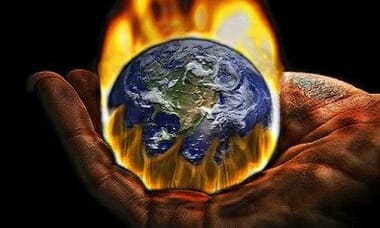
120 Years of Climate Scares (American Thinker)
This is all AMERICAN THINKER, with a hat-tip to ACE OF SPADES:
I sometimes ask myself, “Why is the New York Times allowed to exist?” And I don’t mean: “Why doesn’t the government ban the paper?” because that’s not how I roll. But why is it that this roiling cesspool of lies continues to be supported after decades of outright lies, propaganda and just plain bad reporting. This is the paper that gave us Walter Duranty, for crying out loud. This is the paper that constantly warns of the dire threat of weather, whether warming or cooling, as this great roundup from American Thinker shows. (Notice how many other “respectable” journalistic institutions get in on the act that also still exist.)
— ACE OF SPADES
That’s the gist of an amazing chronology of the last 120 years of scare-mongering on climate, assembled by butnowyouknow.net and reprinted by the estimable Anthony Watts in Wattsupwiththat, who updates it to the present.
— AMERICAN THINKER
This list is dated. It hails from 2014:
- 1895 – Geologists Think the World May Be Frozen Up Again – New York Times, February 1895
- 1902 – “Disappearing Glaciers…deteriorating slowly, with a persistency that means their final annihilation…scientific fact…surely disappearing.” – Los Angeles Times
- 1912 – Prof. Schmidt Warns Us of an Encroaching Ice Age – New York Times, October 1912
- 1923 – “Scientist says Arctic ice will wipe out Canada” – Professor Gregory of Yale University, American representative to the Pan-Pacific Science Congress, – Chicago Tribune
- 1923 – “The discoveries of changes in the sun’s heat and the southward advance of glaciers in recent years have given rise to conjectures of the possible advent of a new ice age” – Washington Post
- 1924 – MacMillan Reports Signs of New Ice Age – New York Times, Sept 18, 1924
- 1929 – “Most geologists think the world is growing warmer, and that it will continue to get warmer” – Los Angeles Times, in Is another ice age coming?
- 1932 – “If these things be true, it is evident, therefore that we must be just teetering on an ice age” – The Atlantic magazine, This Cold, Cold World
- 1933 – America in Longest Warm Spell Since 1776; Temperature Line Records a 25-Year Rise – New York Times, March 27th, 1933
- 1933 – “…wide-spread and persistent tendency toward warmer weather…Is our climate changing?” – Federal Weather Bureau “Monthly Weather Review.”
- 1938 – Global warming, caused by man heating the planet with carbon dioxide, “is likely to prove beneficial to mankind in several ways, besides the provision of heat and power.”– Quarterly Journal of the Royal Meteorological Society
- 1938 – “Experts puzzle over 20 year mercury rise…Chicago is in the front rank of thousands of cities thuout the world which have been affected by a mysterious trend toward warmer climate in the last two decades” – Chicago Tribune
- 1939 – “Gaffers who claim that winters were harder when they were boys are quite right… weather men have no doubt that the world at least for the time being is growing warmer” – Washington Post
- 1952 – “…we have learned that the world has been getting warmer in the last half century” – New York Times, August 10th, 1962
- 1954 – “…winters are getting milder, summers drier. Glaciers are receding, deserts growing” – U.S. News and World Report
- 1954 – Climate – the Heat May Be Off – Fortune Magazine
- 1959 – “Arctic Findings in Particular Support Theory of Rising Global Temperatures” – New York Times
- 1969 – “…the Arctic pack ice is thinning and that the ocean at the North Pole may become an open sea within a decade or two” – New York Times, February 20th, 1969
- 1969 – “If I were a gambler, I would take even money that England will not exist in the year 2000″ — Paul Ehrlich (while he now predicts doom from global warming, this quote only gets honorable mention, as he was talking about his crazy fear of overpopulation)
- 1970 – “…get a good grip on your long johns, cold weather haters – the worst may be yet to come…there’s no relief in sight” – Washington Post
- 1974 – Global cooling for the past forty years – Time Magazine
- 1974 – “Climatological Cassandras are becoming increasingly apprehensive, for the weather aberrations they are studying may be the harbinger of another ice age” –Washington Post
- 1974 – “As for the present cooling trend a number of leading climatologists have concluded that it is very bad news indeed” – Fortune magazine, who won a Science Writing Award from the American Institute of Physics for its analysis of the danger
- 1974 – “…the facts of the present climate change are such that the most optimistic experts would assign near certainty to major crop failure…mass deaths by starvation, and probably anarchy and violence” – New York Times
Cassandras are becoming increasingly apprehensive, for the weather aberrations they are studying may be the harbinger of another ice age
- 1975 – Scientists Ponder Why World’s Climate is Changing; A Major Cooling Widely Considered to Be Inevitable – New York Times, May 21st, 1975
- 1975 – “The threat of a new ice age must now stand alongside nuclear war as a likely source of wholesale death and misery for mankind” Nigel Calder, editor, New Scientist magazine, in an article in International Wildlife Magazine
- 1976 – “Even U.S. farms may be hit by cooling trend” – U.S. News and World Report
- 1981 – Global Warming – “of an almost unprecedented magnitude” – New York Times
- 1988 – I would like to draw three main conclusions. Number one, the earth is warmer in 1988 than at any time in the history of instrumental measurements. Number two, the global warming is now large enough that we can ascribe with a high degree of confidence a cause and effect relationship to the greenhouse effect. And number three, our computer climate simulations indicate that thegreenhouse effect is already large enough to begin to effect the probability of extreme events such as summer heat waves. – Jim Hansen, June 1988 testimony before Congress, see His later quote andHis superior’s objection for context
- 1989 -“On the one hand, as scientists we are ethically bound to the scientific method, in effect promising to tell the truth, the whole truth, and nothing but – which means that we must include all doubts, the caveats, the ifs, ands and buts. On the other hand, we are not just scientists but human beings as well. And like most people we’d like to see the world a better place, which in this context translates into our working to reduce the risk of potentially disastrous climate change. To do that we need to get some broad based support, to capture the public’s imagination. That, of course, means getting loads of media coverage. So we have to offer up scary scenarios, make simplified, dramatic statements, and make little mention of any doubts we might have. This “double ethical bind” we frequently find ourselves in cannot be solved by any formula. Each of us has to decide what the right balance is between being effective and being honest. I hope that means being both.” – Stephen Schneider, lead author of the Intergovernmental Panel on Climate Change,Discover magazine, October 1989
- 1990 – “We’ve got to ride the global warming issue. Even if the theory of global warming is wrong, we will be doing the right thing – in terms of economic policy and environmental policy” – Senator Timothy Wirth
- 1993 – “Global climate change may alter temperature and rainfall patterns, many scientists fear, with uncertain consequences for agriculture.” – U.S. News and World Report
- 1998 – No matter if the science [of global warming] is all phony . . . climate change [provides] the greatest opportunity to bring about justice and equality in the world.” —Christine Stewart, Canadian Minister of the Environment, Calgary Herald, 1998
- 2001 – “Scientists no longer doubt that global warming is happening, and almost nobody questions the fact that humans are at least partly responsible.” – Time Magazine, Monday, Apr. 09, 2001
- 2003 – Emphasis on extreme scenarios may have been appropriate at one time, when the public and decision-makers were relatively unaware of the global warming issue, and energy sources such as “synfuels,” shale oil and tar sands were receiving strong consideration” – Jim Hansen, NASA Global Warming activist, Can we defuse The Global Warming Time Bomb?, 2003
- 2006 – “I believe it is appropriate to have an over-representation of factual presentations on how dangerous it is, as a predicate for opening up the audience to listen to what the solutions are, and how hopeful it is that we are going to solve this crisis.” — Al Gore, Grist magazine, May 2006
- 2006 – “It is not a debate over whether the earth has been warming over the past century. The earth is always warming or cooling, at least a few tenths of a degree…” —Richard S. Lindzen, the Alfred P. Sloan professor of meteorology at MIT
- 2006 – “What we have fundamentally forgotten is simple primary school science. Climate always changes. It is always…warming or cooling, it’s never stable. And if it were stable, it would actually be interesting scientifically because it would be the first time for four and a half billion years.” —Philip Stott, emeritus professor of bio-geography at the University of London
- 2006 – “Since 1895, the media has alternated between global cooling and warming scares during four separate and sometimes overlapping time periods. From 1895 until the 1930’s the media peddled a coming ice age. From the late 1920’s until the 1960’s they warned of global warming. From the 1950’s until the 1970’s they warned us again of a coming ice age. This makes modern global warming the fourth estate’s fourth attempt to promote opposing climate change fears during the last 100 years.” –Senator James Inhofe, Monday, September 25, 2006
- 2007– “I gave a talk recently (on fallacies of global warming) and three members of the Canadian government, the environmental cabinet, came up afterwards and said, ‘We agree with you, but it’s not worth our jobs to say anything.’ So what’s being created is a huge industry with billions of dollars of government money and people’s jobs dependent on it.” – Dr. Tim Ball, Coast-to-Coast, Feb 6, 2007
- 2008 – “Hansen was never muzzled even though he violated NASA’s official agency position on climate forecasting (i.e., we did not know enough to forecast climate change or mankind’s effect on it). Hansen thus embarrassed NASA by coming out with his claims of global warming in 1988 in his testimony before Congress” – Dr. John S. Theon, retired Chief of the Climate Processes Research Program atNASA, see above for Hansen quotes
Section updated by Anthony:
- 2009 – Climate change: melting ice will trigger wave of natural disasters. Scientists at a London conference next week will warn of earthquakes, avalanches and volcanic eruptions as the atmosphere heats up and geology is altered. Even Britain could face being struck by tsunamis – “Not only are the oceans and atmosphere conspiring against us, bringing baking temperatures, more powerful storms and floods, but the crust beneath our feet seems likely to join in too,” – Professor Bill McGuire, director of the Benfield Hazard Research Centre, at University College London, – The Guardian, Sep 2009.
- 2010 – What Global Warming Looks Like. It was more than 5°C (about 10°F) warmer than climatology in the eastern European region including Moscow. There was an area in eastern Asia that was similarly unusually hot. The eastern part of the United States was unusually warm, although not to the degree of the hot spots in Eurasia. James Hansen – NASA GISS, August 11, 2010.
- 2011 – Where Did Global Warming Go? “In Washington, ‘climate change’ has become a lightning rod, it’s a four-letter word,” said Andrew J. Hoffman, director of the University of Michigan’s Erb Institute for Sustainable Development. – New York Times, Oct 15, 2011.
- 2012 – Global warming close to becoming irreversible-scientists. “This is the critical decade. If we don’t get the curves turned around this decade we will cross those lines,” said Will Steffen, executive director of the Australian National University’s climate change institute, speaking at a conference in London. Reuters, Mar 26, 2012
- 2013 – Global-warming ‘proof’ is evaporating. The 2013 hurricane season just ended as one of the five quietest years since 1960. But don’t expect anyone who pointed to last year’s hurricanes as “proof” of the need to act against global warming to apologize; the warmists don’t work that way. New York Post, Dec 5, 2013
- 2014 – Climate change: It’s even worse than we thought. Five years ago, the last report of the Intergovernmental Panel on Climate Change painted a gloomy picture of our planet’s future. As climate scientists gather evidence for the next report, due in 2014, Michael Le Page gives seven reasons why things are looking even grimmer. –New Scientist (undated in 2014)
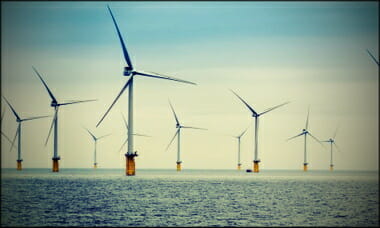
Do We Have to Destroy the Earth to Save It?
Do wind turbines and solar farms hold the keys to saving the environment? Michael Shellenberger, founder of Environmental Progress and noted climate activist, used to think so. Now he’s not so sure. He explains why in this important video. (See my previous Prager audio with Michael)

Experts And Models Constantly Over-Predict Disaster!
To update the “Sweden Story,” REUTERS has an interesting update:
Sweden’s decision to keep schools open during the pandemic resulted in no higher rate of infection among its schoolchildren than in neighbouring Finland, where schools did temporarily close, their public health agencies said in a joint report.
Sweden decided to forego a hard lockdown and keep most schools and businesses open throughout the COVID-19 outbreak, a divisive strategy that set it apart from most of Europe.
Its Public Health Agency has maintained that the negative consequences of a shutdown on the economy and society outweigh the benefits, and says this also applies to schools.
The report, which has not been peer-reviewed, found that during the period of February 24 to June 14, there were 1,124 confirmed cases of COVID-19 among children in Sweden, around 0.05% of the total number of children aged 1-19.
Finland recorded 584 cases in the same period, also equivalent to around 0.05%.
“In conclusion, (the) closure or not of schools had no measurable direct impact on the number of laboratory confirmed cases in school-aged children in Finland or Sweden,” the agencies said in the report, published last week.
The report showed that severe cases of COVID-19 were very rare among both Swedish and Finnish children aged 1 to 19, with no deaths reported. A comparison of the incidence of COVID-19 in different professions suggested no increased risk for teachers.
Children made up around 8.2 percent of the total number of COVID-19 cases in Finland, compared to 2.1 percent in Sweden.
[….]
Separate studies by Sweden’s Karolinska Institutet (KI), an independent medical research institute, and the European Network of Ombudspersons for Children and Unicef, showed that Swedish children fared better than children in other countries during the pandemic, both in terms of education and mental health….
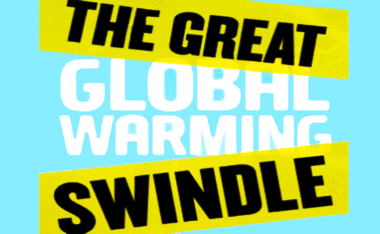
“Apocalypse Never” – Michael Shellenberger Talks With Dennis Prager
Dennis Prager had Michael Shellenberger on his show to discuss his new book entitled “Apocalypse Never: Why Environmental Alarmism Hurts Us All” (Amazon: ). In an article by Michael, you see him transitioning into a “Bjorn Lomborg” type of category. Here is the opening paragraph of that article:
- On behalf of environmentalists everywhere, I would like to formally apologize for the climate scare we created over the last 30 years. Climate change is happening. It’s just not the end of the world. It’s not even our most serious environmental problem. (ENVIRONMENTAL PROGRESS)
Facts through reason and common sense have made it through to this gentleman, and this is nice to hear. In another review of the book, it is noted that Mr. Shellenberger is a long time environmentalist and contributed “rationalism [that] is in woefully short supply in present day environmental discourse. Michael Shellenberger’s Apocalypse Never succeeds in providing a welcome boost” Here is the opening of that review:
The way to a cleaner, sustainable planet is not to eliminate fossil fuels and nuclear power, but rather to expand their use, especially in developing countries to bring economic growth and prosperity, the way such sources did for the developed world.
This is one of the primary themes in the new book, Apocalypse Never, written not by a “climate denier” or “corporate shill.” Instead, author Michael Shellenberger is a 30-year environmental activist with street cred in various causes including saving California’s redwood forests and co-founding a “progressive Democratic, labor-environment push” in 2002 for the New Apollo Project, a renewable energy initiative that long predated the Green New Deal. He also is a Time magazine “Hero of the Environment.”…..
(PA PUNDITS – Peter Murphy)
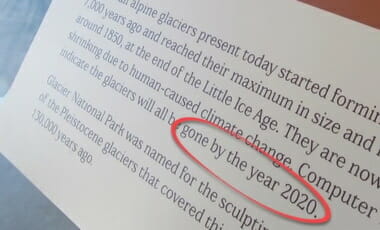
Glacier National Park Removes “Gone By 2020” Signs
This video was found on WUWT’S WEBSITE…. “But by 2019 NOT EVEN ONE of the glaciers had disappeared.” (See also a previous post on this)
One can see pictures with dates on them, that the glaciers are not shrinking as predicted, in which Roger Roots documents some of the most famous spots the adorn most walls from Glacier National Park (WUWT):
…The average date of first freeze in East Glacier, Montana is September 13th. It is only then that one can assess whether the glaciers are getting bigger or smaller than in previous years.
In September 2015, Lysander Spooner University launched an annual research project aimed at visiting GNP’s glaciers every year at their lowest points. This year a small group of us opted to hike to the popular Grinnell Glacier and take a few snapshots on September 16. We hiked the 5.5 miles from the Many Glacier Hotel and arrived at glacier’s edge late in the afternoon.
The Grinnell is perhaps the most iconic of two dozen named glaciers in the Park. Untold thousands of people have hiked to it. Millions more have been exposed to government imagery of the Glacier melting away. The nearby Many Glacier Hotel features pictures on its walls showing the Grinnell’s decline from the 1880s to 2008. Numerous blog posts and magazine feature stories have also addressed this theme.
Upon our return to the Hotel after visiting the Glacier, we noticed that our brand-new photos appear to show that the Grinnell Glacier has grown slightly from the 2008 images that are displayed on the Hotel walls. There has been no reporting of this in any newspaper or broadcast that we know of. (In fact, all news coverage reports the precise opposite.) The smaller Gem Glacier—which is visible from the valley miles below—also appears to be slightly larger than it is shown in 2008 pictures on display….
ZEROHEDGE note from WUWT’s article, the following, with an addition:
….The ‘gone by 2020’ claims were repeated in the New York Times, National Geographic, and other international news sources. But no mainstream news outlet has done any meaningful reporting regarding the apparent stabilization and recovery of the glaciers in GNP over the past decade. Even local Montana news sources such as The Missoulian, Billings Gazette and Bozeman Daily Chronicle have remained utterly silent regarding this story.
(Note that since September 2015 the author has offered to bet anyone $5,000 that GNP’s glaciers will still exist in 2030, in contradiction to the reported scientific consensus. To this day no one has taken me up on my offer. –R.R.)
- I live very close to Glacier National Park, and while the media has been saying for years that the glaciers are “disappearing”, there has been no significant change in the park’s glaciers in the time I have resided here. The news above only reinforces the reality that if the climate is “changing”, it is only getting colder, NOT warmer…. – Brandon Smith, Founder of Alt-Market.com
But again, this is nothing new… glaciers have been shrinking (thank gawd) for 20,000 years. And the Scare tactics are nothing new (click pic for link):

What I Wasn’t Told About Climate Change (Luca Rossi)
(Via WATTS UP WITH THAT)
More from GENERATION LIBERTY:
- “Since the 1950s, polar bear numbers have increased by around 400%” – Click here.
- “water vapour is in fact the most abundant greenhouse gas” – Click here.
- “CO2 only makes up 0.04%of the earth’s atmosphere” – Click here.
- “multiple times in the earth’s history where CO2 levels have been higher and temperatures have been lower.” Click here, for Berner, et al. ‘Geocarb III’, a well known geochemical model of ancient CO2 levels showing them to be at vastly higher levels than currently. And here for Finnegan et al. ‘The Magnitude and Duration of Late Ordovician–Early Silurian Glaciation’ which examines the extent of glaciation during the Late Ordovician period, indicating much lower temperatures than currently.
- “I was told 97% of scientists agree that human induced climate change is happening and that the ‘science is settled’.” Click here.
- “500 scientists submitted a letter to the United Nations stressing there is no climate emergency, global warming has not increased natural disasters and the measures to fight climate change deny humans the life-giving benefits of electricity.” Read it here.
- “Ivar Giaver thinks climate change is a pseudoscience.” Click here.
- “Al Gore said that humanity had only 10 years left before the world would reach the point of no return.” Click here.
- “In the 1970s there was scientific consensus that the earth was heading into a period of significant cooling or a possible ice age.” Click here.
- “In 2009 Prince Charles said we had 8 years to save the world from ‘irretrievable climate and ecosystem collapse’.” Click here.
- “Since 1990, 1.2 billion people have overcome extreme poverty.” Click here.
- “137,000 people have been listen out of poverty everyday, for 25 years.” Click here.
- “So rather than worrying about the world ending in … 11 years” Click here.
- “or was it 18 months?” Click here.

We Are Days Away From Climate Doomsday (Failed Predictions)
First of all… While I like their rants (Paul Watson, Mark Dice, and others) and these commentaries hold much truth in them, I do wish to caution you… he is part of Info Wars/Prison Planet network of yahoos, a crazy conspiracy arm of Alex Jones shite. Also, I bet if I talked to him he would reveal some pretty-crazy conspiratorial beliefs that would naturally undermine and be at-odds-with some of his rants. Just to be clear, I do not endorse these people or orgs.
Second of all… here is more about this 2004 Pentagon Report About 2020:
….That’s because they made the prediction back in 2004 and said all that would happen by 2020, which is just 5 days away.
“Climate change over the next 20 years could result in a global catastrophe costing millions of lives in wars and natural disasters,” reported left-wing newspaper the Guardian on February 22, 2004.
“A secret report, suppressed by US defence chiefs and obtained by The Observer, warns that major European cities will be sunk beneath rising seas as Britain is plunged into a ‘Siberian’ climate by 2020. Nuclear conflict, mega-droughts, famine and widespread rioting will erupt across the world,” the report added.
The alarmist document went on to claim that nations would resort to using nuclear weapons to protect dwindling food supplies, a situation that would “bring the planet to the edge of anarchy.”…

Flashback: Al Gore vs Reality (11-years ago today)
…Deadlines Come and Go
Recently, in 2014, the United Nations declared a climate “tipping point” by which the world must act to avoid dangerous global warming. “The world now has a rough deadline for action on climate change. Nations need to take aggressive action in the next 15 years to cut carbon emissions, in order to forestall the worst effects of global warming, says the Intergovernmental Panel on Climate Change,” reported the Boston Globe.
But way back in 1982, the UN had announced a two-decade tipping point for action on environmental issues. Mostafa Tolba, executive director of the UN Environment Program (UNEP), warned on May 11, 1982, that the “world faces an ecological disaster as final as nuclear war within a couple of decades unless governments act now.” According to Tolba, lack of action would bring “by the turn of the century, an environmental catastrophe which will witness devastation as complete, as irreversible as any nuclear holocaust.”
In 1989, the UN was still trying to sell that “tipping point” to the public. According to a July 5, 1989, article in the San Jose Mercury News, Noel Brown, the then-director of the New York office of UNEP was warning of a “10-year window of opportunity to solve” global warming. According to the Herald, “A senior U.N. environmental official says entire nations could be wiped off the face of the Earth by rising sea levels if the global warming trend is not reversed by the year 2000. Coastal flooding and crop failures would create an exodus of ‘eco-refugees,’ threatening political chaos.”
But in 2007, seven years after that supposed tipping point had come and gone, Rajendra Pachauri, then the chief of the UN IPPC, declared 2012 the climate deadline by which it was imperative to act: “If there’s no action before 2012, that’s too late. What we do in the next two to three years will determine our future. This is the defining moment.”
UN Secretary-General Ban Ki-moon announced his own deadline in August 2009, when he warned of “incalculable” suffering without a UN climate deal in December 2009. And in 2012, the UN gave Planet Earth another four-year reprieve. UN Foundation president and former U.S. Senator Tim Wirth called Obama’s re-election the “last window of opportunity” to get it right on climate change.
Heir to the British throne Prince Charles originally announced in March 2009 that we had “less than 100 months to alter our behavior before we risk catastrophic climate change.” As he said during a speech in Brazil, “We may yet be able to prevail and thereby to avoid bequeathing a poisoned chalice to our children and grandchildren. But we only have 100 months to act.”
To his credit, Charles stuck to this rigid timetable—at least initially. Four months later, in July 2009, he declared a ninety-six-month tipping point. At that time the media dutifully reported that “the heir to the throne told an audience of industrialists and environmentalists at St James’s Palace last night that he had calculated that we have just 96 months left to save the world. And in a searing indictment on capitalist society, Charles said we can no longer afford consumerism and that the ‘age of convenience’ was over.”
At the UN climate summit in Copenhagen in 2009, Charles was still keeping at it: “The grim reality is that our planet has reached a point of crisis and we have only seven years before we lose the levers of control.”
As the time expired, the Prince of Wales said in 2010, “Ladies and gentlemen we only—we now have only 86 months left before we reach the tipping point.”
By 2014, a clearly exhausted Prince Charles seemed to abandon the countdown, announcing, “We are running out of time. How many times have I found myself saying this over recent years?”
In the summer of 2017, Prince Charles’s one-hundred-month tipping point finally expired.26 What did Charles have to say? Was he giving up? Did he proclaim the end times for the planet? Far from it. Two years earlier, in 2015, Prince Charles abandoned his hundred-month countdown and gave the world a reprieve by extending his climate tipping point another thirty-five years, to the year 2050!
A July 2015 interview in the Western Morning News revealed that “His Royal Highness warns that we have just 35 years to save the planet from catastrophic climate change.” So instead of facing the expiration of his tipping point head on, the sixty-nine-year-old Charles kicked the climate doomsday deadline down the road until 2050 when he would be turning the ripe age of 102. (Given the Royal Family’s longevity, it is possible he may still be alive for his new extended deadline.)
Former Irish President Mary Robinson issued a twenty-year tipping point in 2015, claiming that global leaders have “at most two decades to save the world.”
Al Gore announced his own ten-year climate tipping point in 2006 and again in 2008, warning that “the leading experts predict that we have less than 10 years to make dramatic changes in our global warming pollution lest we lose our ability to ever recover from this environmental crisis.” In 2014, with “only two years left” before Gore’s original deadline, the climatologist Roy Spencer mocked the former vice president, saying “in the grand tradition of prophets of doom, Gore’s prognostication is not shaping up too well.”
Penn State Professor Michael Mann weighed in with a 2036 deadline. “There is an urgency to acting unlike anything we’ve seen before,” Mann explained. Media outlets reported Mann’s made a huge media splash with his prediction, noting “Global Warming Will Cross a Dangerous Threshold in 2036.”
Other global warming activists chose 2047 as their deadline, while twenty governments from around the globe chose 2030 as theirs, with Reuters reporting that millions would die by 2030 if world failed to act on climate: “More than 100 million people will die and global economic growth will be cut by 3.2% of GDP by 2030 if the world fails to tackle climate change, a report commissioned by 20 governments said on Wednesday. As global avg. temps rise due to ghg emissions, the effects on the planet, such as melting ice caps, extreme weather, drought and rising sea levels, will threaten populations and livelihoods, said the report conducted by the humanitarian organization DARA.”
As we saw in chapter five, top UK scientist Sir David King warned in 2004 that that by 2100 Antarctica could be the only habitable continent.
Tipping point rhetoric seems to have exploded beginning in 2002. An analysis by Reason magazine’s Ron Bailey found that tipping points in environmental rhetoric increased dramatically in that year…..

Earth-Day Fails! Prince EA’s Video is Full of Hot Air
(Originally Posted Apr 22, 2015 | New Audios)
I wanted to play the video in whole, then go through 6-points it makes to shed more light on them.
Okay, lets deal with them in order.
- Deforestation [below/left]
- Native-Americans
- Polar Bears
- Sea Level Rise
- China v. Sarah Palin
- Ice Melting
- Rockets
An external point-by-point critique:
(I recently added to this next section)
DEFORESTATION
Prince EA’s mentioning that a future generation of people will not know what trees are is JUST LIKE people telling us kids will not know what snow is like:
Snowfalls are now just a thing of the past
Monday 20 March 2000
Britain’s winter ends tomorrow with further indications of a striking environmental change: snow is starting to disappear from our lives.
Sledges, snowmen, snowballs and the excitement of waking to find that the stuff has settled outside are all a rapidly diminishing part of Britain’s culture, as warmer winters – which scientists are attributing to global climate change – produce not only fewer white Christmases, but fewer white Januaries and Februaries.
[….]
However, the warming is so far manifesting itself more in winters which are less cold than in much hotter summers. According to Dr David Viner, a senior research scientist at the climatic research unit (CRU) of the University of East Anglia,within a few years winter snowfall will become “a very rare and exciting event”.
“Children just aren’t going to know what snow is,” he said.
Funny thing is, some record breaking snow-fall followed in the years after… so much so that kids wished they forgot what it was.
But in all seriousness we are seeing similar dire predictions fail about the deforestation of trees. Keep in mind this is not a polemic proving all stories of deforestation false. I merely wish to bring some balance to the issue. For instance, in the Amazon, well over 95% of deforestation comes from cattle ranching, commercial agriculture, and infrastructure improvements. Less than 5% is from legal and illegal logging. Take note as well that The New York Times makes the point that,
- “…for every acre of rain forest cut down each year, more than 50 acres of new forest are growing in the tropics on land that was once farmed, logged or ravaged by natural disaster.”
I love balance.
William Shatner, Captain Kirk of Star Trek fame, mentioned in a National Geographic video that, “rainforests [are] being cleared at the rate of 20 football fields per minute.” If this were truly the case, the forests would have been completely wiped out years ago. In Prince EA’s video he said 40 football fields! In an interview with Dr. Evaristo Eduardo de Miranda (one of the world’s leading experts on deforestation in the Amazon, is a professor of ecology at the University of Sao Paulo, Brazil’s largest institution of higher learning, and president of ECOFORCE, a private, nonprofit, environmental research/educational institution), he was asked where these numbers come from:
Q. There have been many reports by environmental groups in the U.S. claiming that the Amazon rain forest is being destroyed at a frightening pace. Many conflicting statistics are given concerning the alleged rate of destruction — 4 million hectares per year, 8 million hectares per year, 50,000 acres per day, etc. What are the facts and where are these statistics coming from?
A. A good example of this is the report released at the Earth Summit by the FAO [United Nations Food and Agriculture Organization]. FAO claims that the world tropical deforestation rate is 16.9 million hectares per year. FAO has up to the present been still using their discredited 8 million hectares per year rate for deforestation in Brazil. But when pressed at the summit they conceded to the 2.1 million hectares annually that the INPE, the Brazilian national space agency, has asserted is the real rate. This is an admission that they were inflating the deforestation rate by nearly 300 percent.
But they also said that deforestation for all of South America is 6.9 million hectares annually, which raises an obvious problem. Since Brazil has 70 percent of South America’s tropical forests, it would be incredible to suggest that other countries are deforesting at the levels necessary for the FAO figures to be valid. If you subtract the 2.1 million [Brazilian hectares] from the [FAO’s] 6.9 million, you have 4.8 million hectares being cut down annually in the 30 percent of South American tropical forests outside of Brazil. That is far greater than any data shows.
There is a similar problem with their annual 16.9 million hectares statistic for world deforestation. If you subtract Brazil’s 2.1 million, then you must ask who deforests the other 14.8 million hectares. When they were asked these questions, the FAO could not answer. They could not break the numbers down country by country or show any other means by which they arrived at this figure.
Q. No maps, no satellite photos, no national data ? Where did they conjure up these figures?
A. They were put in a very bad light because they could produce nothing to substantiate these fantastic figures. This is an important example, because if the FAO cannot sustain these numbers, then you can imagine that these eco-groups — the NGOs [Non-Governmental Organizations] — could not either. They always use these big numbers to make sensational news stories, but they never can break the aggregate numbers down to show where they come from, and they never produce maps with alleged areas of deforestation specified so that they can be independently verified.
One comment from the inter-webs noted: “The Amazon is just fine, as the people are moving out of the jungle to the cities and the jungle is raging back quite nicely. It’s in Indonesia and the area that the forests are being cut down for palm oil/biofuel productions.” Yep
In fact, the co-founder and long-time director of Greenpeace, Patrick Moore, said: “All these save-the-forests arguments are based on bad science…. They are quite simply wrong… [Phillip Stott and I] found that the Amazon rainforests is more than 90% intact. We flew over it and met all the environmental authorities. We studied satellite pictures of the entire area.” Phillip Stott, who has 30 years of studying tropical forests under his belt as well as being professor of biogeography at London University mentioned that, “there are now still – despite what humans have done – more rainforests today than there were 12,000 years ago.”
Conventional wisdom is often challenged as well by climatologists and specialists in their field. The NEW YORK TIMES passes along the complexity of an issue most people take for granted:
…Deforestation accounts for about 20 percent of global emissions of carbon dioxide. The assumption is that planting trees and avoiding further deforestation provides a convenient carbon capture and storage facility on the land.
That is the conventional wisdom. But the conventional wisdom is wrong.
[….]
Planting trees and avoiding deforestation do offer unambiguous benefits to biodiversity and many forms of life. But relying on forestry to slow or reverse global warming is another matter entirely.
The science says that spending precious dollars for climate change mitigation on forestry is high-risk: We don’t know that it would cool the planet, and we have good reason to fear it might have precisely the opposite effect. More funding for forestry might seem like a tempting easy win for the world leaders at the United Nations, but it’s a bad bet.
SCIENTIFIC AMERICAN gets a bit more detailed regarding the above. But this is a very complicated issue… especially since chopping down massive forests is being posited as a boon to fight “global warming” – to wit:
…A 2007 study in the Proceedings of the National Academy of Sciences found that global-scale deforestation would result in a net cooling, as the changes in albedo and evaporation would overwhelm the impact of all that carbon being released into the atmosphere. But that doesn’t mean we should go about chopping down every tree we can—on the whole, preserving tropical forests and even adding more trees in the equatorial latitudes will be beneficial for the climate, not to mention the biodiversity that depends on rainforests. But large-scale reforestation or afforestation projects in the north may not be the best idea, as Lee says:
People are debating whether afforestation is a good idea in high latitudes. If you plant trees you sequester carbon, which is a benefit to the climate system. At the same time, if you plant trees you warm the landscape because trees are darker compared to other vegetation types. So they absorb solar radiation.
The study is another reminder of just how devilishly complicated the climate system really is….
(TIME)
Here are some other FLASHBACK articles regarding trees and the varying ideas of their effects on our climate:
Plant or not plant trees to fight “global warming?! It’s all so confusing! This is what the (allegedly) settled science says:
Update: BBC: Climate change: Planting new forests ‘can do more harm than good’
Like I said – challenging conventional wisdom. In reality, what throws many of these studies of deforestation off is the urban heat island effect and rural cold island effect. For more on this see Dr. S. Jeevananda Reddy’s (bio) book/chapter: “Climate Change: Myths & Realities”, 2008 — Chapter 7: Ecological changes.
NATIVE-AMERICANS
The second point I wish to comment on, and it is Prince EA’s mentioning of the Native-Americans. I do not doubt that Prince was taught these things in school. However, like many other issues cornered in the monopoly of the government, balance is needed.
For instance, I wrote a response to an in-class supplement to my sons elementary class lesson [he is now married and lives in Florida] about HOW the Settlers treated the New World versus how the Indians treated it. I made sure each parent got a copy and this engendered a visit to see the principle. Here is a quote from that post:
From James Fenimore Cooper to Dances with Wolves and Disney’s Pocahontas, American Indians have been mythologized as noble beings with a “spiritual, sacred attitude towards land and animals, not a practical utilitarian one.”[16] Small children are taught that the Plains Indians never wasted any part of the buffalo. They grow up certain that the Indians lived as one with nature, and that white European settlers were the rapists who destroyed it.
In The Ecological Indian: Myth and History, Shepard Krech III, an anthropologist at Brown University, strips away the myth to show that American Indians behaved pretty much like everyone else. When times were bad they used the whole buffalo. When times were good, “whole herds” of buffalo might be killed only for their tongues or their fetuses.[17] Although American Indians adapted to their environment and were intimately familiar with it, they had no qualms about shaping it to their needs.
Indians set fires to promote the growth of grasses and make land more productive for the game and plants that they preferred. Sometimes fire was used carefully. Sometimes it was not. Along with the evidence that Indians used fire to improve habitat are abundant descriptions of carelessly started fires that destroyed all plant life and entire buffalo herds.[18]
Nor were American Indians particularly interested in conserving resources for the future. In the East, they practiced slash and burn agriculture. When soils became infertile, wood for fuel was exhausted, and game depleted, whole villages moved.[19] The Cherokee, along with the other Indians who participated in the Southern deerskin trade, helped decimate white-tailed deer populations.[20] Cherokee mythology believed that deer that were killed in a hunt were reanimated.
In all, contemporary accounts suggest that many Indians treated game as an inexhaustible resource. Despite vague hints in the historical records that some Crees may have tried to conserve beaver populations by allocating hunting territories and sparing young animals, Krech concludes that it was “market forces in combination with the Hudchild’s Bay Company policies [which actively promoted conservation]” that “led to the eventual recovery of beaver populations.”[21]
Those who blame European settlers for genocide because they introduced microbes that ravaged native populations might as well call the Mongols genocidal for creating the plague reservoirs that led to the Black Death in Europe.[22] Microbes travel with their hosts. Trade, desired by Indians as well as whites, created the pathways for disease.
[16] Shepard Krech III, The Ecological Indian: Myth and History, W.W. Norton & Company; New York: NY (1999), p. 22.
[17] Ibid., p. 135.
[18] Ibid., p. 119.
[19] Ibid., p. 76.
[20] Ibid., p. 171.
[21] Ibid., p. 188.
[22] For a discussion of the effect of the Mongol invasions and their effect on European epidemiology see, William H. McNeill, Plagues and Peoples, Doubleday; New York, NY (1977).
These little historical facts changes the narrative just a tad, doesn’t it? Like when the Iroquois directed their most furious attacks against the Hurons during the Beaver Wars. One Jesuit missionary wrote, “it is the design of the Iroquois to capture all the Hurons, if it is possible; to put the chiefs and great part of the nation to death, and with the rest to form one nation and one country.” American Indians, alongside the Settlers, accelerated their hunting of the American Bison (Buffalo) that contributed to the near extinction of this plains beast. All in the name of the Mighty Buck! (READ MORE)
POLAR BEAR BREAK
(An UPDATED POST on an old one can be found showing the bottom line is that the current population is at record highs.) While not dealt with well in Prince EA’s video, his presentation shows a computerized Polar Bear[s] walking in the background while intimating extinction or low numbers. Again, he probably learned about this in school, so you cannot really blame him fully. He is the product of indoctrination. However, this just isn’t the case. In fact, there are a record number of Polar Bears. Here Is The Bottom Line:
1) It confirms the global population size I published in May 2015 (20,129-32,558; average 26,344). See the graph below, now amended to reflect this point. If global numbers do decline over the next 35 years, it will be from a high point not previously acknowledged by the IUCN Polar Bear Specialist Group (PBSG).
2) The current population trend is listed as: ? Unknown. [NOT declining – if anyone claims it is, send them here: IUCN Red List U. maritimus]
- For the latest – see: FAILED AMSTRUP POLAR BEAR PREDICTIONS HAVE CLIMATE CHANGE COMMUNITY IN A PANIC
(MS) WINNIPEG, Canada (Globe and Mail 4/2012) The number of bears along the western shore of Hudson Bay, believed to be among the most threatened bear subpopulations, stands at 1,013 and could be even higher, according to the results of an aerial survey released Wednesday by the Government of Nunavut. That’s 66 per cent higher than estimates by other researchers who forecasted the numbers would fall to as low as 610 because of warming temperatures that melt ice faster and ruin bears’ ability to hunt. The Hudson Bay region, which straddles Nunavut and Manitoba, is critical because it’s considered a bellwether for how polar bears are doing elsewhere in the Arctic.
[….]
But many Inuit communities said the researchers were wrong. They said the bear population was increasing and they cited reports from hunters who kept seeing more bears. Mr. Gissing said that encouraged the government to conduct the recent study, which involved 8,000 kilometres of aerial surveying last August along the coast and offshore islands.
Mr. Gissing said he hopes the results lead to more research and a better understanding of polar bears. He said the media in southern Canada has led people to believe polar bears are endangered. “They are not.” He added that there are about 25,000 polar bears across Canada’s Arctic. “That’s likely the highest [population level]there has ever been.”
[Editors note: perhaps to 27,000-32,000?]
Again, this throws a monkey wrench into the narrative, and makes the next proposition trues if the counter proposition can be true:
Look, it is simple:
- Either polar bears are dying because of CO2 emissions via man ~ hence, we should stopproducing high levels of CO2;
or [following the train of thinking FROM Al Gore],
- Polar bears are at their highest recorded population levels because of CO2 emissions via man, hence, we should produce high levels of CO2.
If “a,” why not “b”?
Truth About Stranded Polar Bears Image
(SEE MORE)
FOX NEWS & SEA LEVEL RISE
Want to move on quick over this section? Here is my response to a Starbucks patron (of which I count myself) when they bring up sea rise:
- “I believe in sea rise? Hell, 10,000 years ago it was 350ft lower. That is how the American Indian populated the continent.”
Mic Drop!
This was interesting because he calls out a news network. Good for him! He is wrong, but I like his style. This section I will deal with sea level rise in general, and then deal with the Bangladesh portion of Prince EA’s claims. The general sea rise refutation of the school-house session can be seen here, but let us look at a graph:

I wanted to draw the people who believe this (rising oceans) attention to a very old photograph compared to a new one to compare La Jolla (California) sea levels from 1871 to Now (REAL CLIMATE SCIENCE):
Also, Photographs show no change in Sydney sea level over the last 130 years (REAL CLIMATE SCIENCE):
But what interested me was his mentioning Bangladesh specifically… wrapped up in a challenge to Fox News.
Woa Whoa! Throwin’ down the gauntlet. I am going to answer this from various sources, but as you will see, this is another fail on the eco-fascists side. Here is a conservative source first:
It’s hard to believe that it’s been more than a month since the latest example of intellectual collapse at the IPCC. Now added to the fraudulent claims about Amazon rain forests, African crop harvests, and Himalayan glaciers comes the exposure of a very large error in the UN body’s warnings about flooding in Bangladesh. Turns out that the scientists screeching about the cataclysmic effects of sea-level rises forgot to consider sedimentary deposits (via Yid with Lid):
Scientists in Bangladesh posed a fresh challenge to the UN’s top climate change panel Thursday, saying its doomsday forecasts for the country in the body’s landmark 2007 report were overblown.
The Intergovernmental Panel on Climate Change (IPCC), already under fire for errors in the 2007 report, had said a one-metre (three-foot) rise in sea levels would flood 17 percent of Bangladesh and create 20 million refugees by 2050.
The claim helped create a widespread consensus that the low-lying country was on the “front line” of climate change, but a new study argues the IPCC ignored the role sediment plays in countering sea level rises. …
But IPCC’s prediction did not take into account the one billion tonnes of sediment carried by Himalayan rivers into Bangladesh every year, which are crucial in countering rises in sea levels, the study funded by the Asian Development Bank said.
“Sediments have been shaping Bangladesh’s coast for thousands of years,” said Maminul Haque Sarker, director of the Dhaka-based Center for Environment and Geographic Information Services (CEGIS), who led research for the study.
Even if the sea level rises that far — a claim which is itself greeted with increasing skepticism — most of the coastline for Bangladesh won’t be affected.
WHAT’S UP WITH THAT calls this Bangladesh “THE POSTER CHILD,” and here is the end of their report:
Deltas are formed at the boundary of rivers and oceans. The rivers that build deltas flow to low and slowly sinking parts of the crust, where large volumes of sediment are being deposited. They will always be in balance with sea level but almost by definition increase in size, if rivers are allowed to follow their course. Deltas, by their very nature are building out and up. They also tend to flood frequently and seasonally, often with disastrous effects on the inhabitants. People living in deltas should learn to swim, have a boat and generally be aware of what can happen. Sea level rise is not an issue in large deltas; they have been proven to be able to keep up with any sea level rise. Flooding disasters are seasonally the result of excessive run-off, and occasionally due to unfortunate storm surges that result in breaks through natural barriers, but this has nothing to do with sea level rise. Bangladesh will be there, even if all the ice in the world has melted, with its people still fighting floods while farming the fertile floodplains.
Scientific American also takes a wholly different course and shows that current flooding is caused in big part to the Bangladeshi’s themselves:
Man-made flood protections, not climate change, are the main culprit in sea-level rise in southwest Bangladesh, according to new research conducted for the U.S. Navy’s Office of Naval Research.
The report from a team of scientists at Vanderbilt University is the first part in a wide-ranging, $7.5 million analysis of environmental stress and human migration scenarios in the low-lying South Asian nation.
Published this week in Nature Climate Change, the initial study finds that embankments constructed since the 1960s are primarily to blame for lower land elevations along the Ganges-Brahmaputra River Delta, with some areas experiencing more than twice the rate of the most worrisome sea-level rise projections from the United Nations’ Intergovernmental Panel on Climate Change.
OF COURSE the magazine then goes on to assert Climate Disruption is still a threat to Bangladesh (towing the line is tough!). But this problem is moot because they gain land from the delta and the flooding is mainly “man-made,” so are the solutions [technology].
CHINA vs SARAH PALIN
WOW, another challenge. Good for you Prince EA! But again, your understanding is wrong.
The Atlantic Monthly has a VERY interesting article I read a few years back. They note that in reality the pollution in China is at our 1980-levels.
Does China, in short, truly deserve its reputation as an environmental pariah?
Ramon Guardans, a biologist who studies air pollution and co-chairs a global monitoring plan on toxic chemicals for the United Nations Environment Program, is skeptical.
“The air concentrations of several pollutants in sites in China are certainly comparable to the levels observed in heavily industrialized areas in Europe and North America before the 1970’s,” he wrote by email. But pound for pound, person for person these pollutant emissions were, and generally still are, much greater than China’s.
“So in relation to the population density we see in China,” Guardans continues, “the U.S. and Europe did a much dirtier job industrializing.”
Beijing just happens to be, similar to Los Angeles, in a geographical bind. Bloomberg makes this point as well around the same time the Atlantic Monthly does:
Why is Beijing susceptible to these episodes? First, and uncontrollable by the authorities, are the peculiarities of Beijing’s geography. In particular, the capital is surrounded by mountain ranges that lead to the unfortunate phenomenon of an inversion layer—cold air settles on top of a warmer air mass, trapping the pollutants inside. This is the same problem that bedevils Los Angeles.
Beyond the misfortune of geography, though, lie a number of factors that have everything to do with China’s policies….
China is blessed and cursed with the world’s largest coal reserves, which means that the country sources some 80 percent of its electricity from burning coal—and much of that coal is of lower quality and highly polluting.
But as I have clearly shown… wind and solar energy is no cleaner. And the dream in peoples heads is truly just that, a dream… I mean when Google caves, you know the end-is-nigh.
- “Even if one were to electrify all of transport, industry, heating and so on, so much renewable generation and balancing/storage equipment would be needed to power it that astronomical new requirements for steel, concrete, copper, glass, carbon fibre, neodymium, shipping and haulage etc etc would appear. All these things are made using mammoth amounts of energy: far from achieving massive energy savings, which most plans for a renewables future rely on implicitly, we would wind up needing far more energy, which would mean even more vast renewables farms – and even more materials and energy to make and maintain them and so on. The scale of the building would be like nothing ever attempted by the human race.”
I must say I’m personally surprised at the conclusion of this study. I genuinely thought that we were maybe a few solar innovations and battery technology breakthroughs away from truly viable solar power. But if this study is to be believed, solar and other renewables will never in the foreseeable future deliver meaningful amounts of energy.
And bio-fuels cause, literally, food riots and starvation in poor countries and raise the price of food which hurt the poorer people in the more well off nations: Ethanol is killing children around the world… Democrats! It takes 450lbs of Corn to fill one SUV tank… that is a years worth of food for multiple children, not to mention the rise of corn-based food for the poor worldwide. (SEE MORE)
ICE MELTING
Here is another fail on the part of the doomsayers who speak with a tongue very similar to the eschatology handed us at the most fiery southern Baptist church.
Prince EA is just relying on others work that have been either proven wrong or fraudulant in nature. Here for instance we see some predictions simlar to Prince’s:
“Peter Wadhams, who heads the Polar Ocean Physics Group at the University of Cambridge… believes that the Arctic is likely to become ice-free before 2020 and possibly as early as 2015,” (YALE ENVIRONMENT 360 REPORTED IN 2012). Yet government data shows that arctic sea ice has increased since then….
Here I will post information from a PREVIOUS POST about Polar Bear population levels, in which I point the following out:
Recent Population Increase Partly Due To Lots of Sea-Ice
Canada (CBC News via the Canadian Coast Guard, 3/2014) [ARCTIC Sea Ice] The Canadian Coast Guard is pleading with merchant ships to plan their voyages well in advance this year as the organization’s icebreaker fleet confronts some of the worst ice conditions on the Atlantic Ocean in decades.
“Plan your voyage and we’ll all get through this,” said Mike Voight, the Atlantic region’s director of programs. “We’ve got a pretty bad or challenging ice year.”
The Canadian Ice Service, an arm of Environment Canada, said there is 10 per cent more ice this year compared to the 30-year average.
“We probably haven’t seen a winter this bad as far as ice for the past 25 years,” said Voight, referring to both the amount and thickness of the ice….
The American Geophysical Union (AGU) Abstract (12/2014) [ARCTIC sea ice] Despite a well-documented ~40% decline in summer Arctic sea ice extent since the late 1970’s, it has been difficult to estimate trends in sea ice volume because thickness observations have been spatially incomplete and temporally sporadic. While numerical models suggest that the decline in extent has been accompanied by a reduction in volume, there is considerable disagreement over the rate at which this has occurred. We present the first complete assessment of trends in northern hemisphere sea ice thickness and volume using 4 years of measurements from CryoSat-2. Between autumn 2010 and spring 2013, there was a 14% and 5% reduction in autumn and spring Arctic sea ice volume, respectively, in keeping with the long-term decline in extent. However, since then there has been a marked 41% and 9% recovery in autumn and spring sea ice volume, respectively, more than offsetting losses of the previous three years. The recovery was driven by the retention of thick ice around north Greenland and Canada during summer 2013 which, in turn, was associated with a 6% drop in the number of days on which melting occurred – climatic conditions more typical of the early 1990’s. Such a sharp increase in volume after just one cool summer indicates that the Arctic sea ice pack may be more resilient than has been previously considered.
Talking About Weather (7/2014) [ANTARCTIC sea ice] Antarctic sea ice has hit its second all-time record maximum this week. The new record is 2.112 million square kilometers above normal. Until the weekend just past, the previous record had been 1.840 million square kilometers above normal, a mark hit on December 20, 2007, as I reported here, and also covered in my book.
Mark Serreze, director of the National Snow and Ice Data Center, responded to e-mail questions and also spoke by telephone about the new record sea ice growth in the Southern Hemisphere, indicating that, somewhat counter-intuitively, the sea ice growth was specifically due to global warming.
Let us compare this to Al Gore saying the northern ice-caps will be gone
NewsBusters makes the point another way, in that the “media” is derelict in their duty:
The same year that former Vice President Al Gore predicted that the Arctic sea ice could be completely gone, Arctic ice reached its highest level in two years, according to a report by theDanish Meteorological Institute.
According to that report, which was cited by the Daily Mail (UK) on Aug. 30, “[t]he Arctic ice cap has expanded for the second year in a row.” The U.S. National Snow and Ice Data Center (NSIDC)confirmed this trend, but didn’t go into as much detail as the Danish Meteorological Institute.
But an examination of ABC, CBS and NBC news programs since the Daily Mail story was published found that all three networks ignored news that Arctic sea ice was at a two-year high….
Remember, you can lead a horse to water but cannot make it drink.…read it all at Fox News.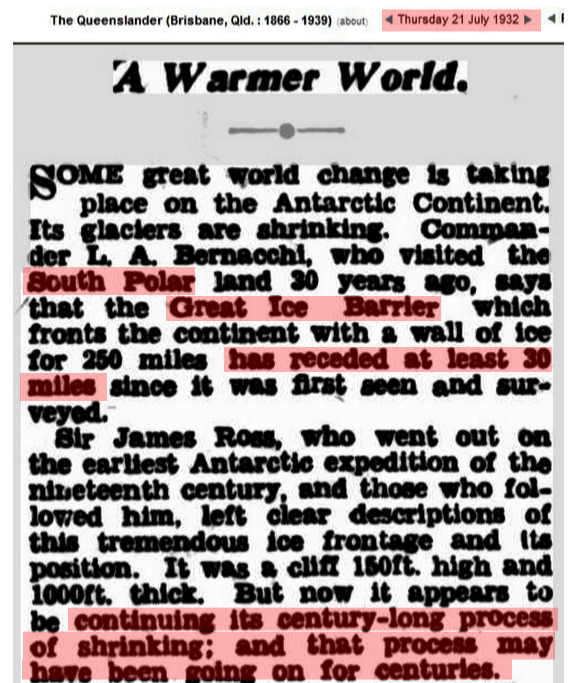
“The West Antarctic ice sheet sits on bedrock which is below sea level. It formed during the ice age but the sea level rose 12,000 years ago and has been chipping away at it ever since. What happens to ice which sits on rock which is below sea level? Hint: it has nothing to do with CO2.” This is a comment from Real Science’s FLASHBACK to 1932 and how the ICe-Sheets were melting then (to the right).
AND FINALLY….
ROCKETS
I hate to break it to Prince EA, but that rocket to find other worlds would have to be powered by (in part) fossil fuels to break earths gravitational force. Not to mention the massive amount of energy (fossil fuels again) And often times the left kills innovation in areas (like nuclear) for ideological reasons. Keeping us dependent on fossil fuels.
You see, all of the above “sounds good,” and grand. But as Thomas Sowell says, liberals — unlike conservatives — do not ask three simple questions:
- compared to what?
- at what cost?
- what hard-evidence do you have?
FOR INSTANCE, as an example, Google came to the logical conclusion that such endeavors with alternative fuels is unattainable:
We came to the conclusion that even if Google and others had led the way toward a wholesale adoption of renewable energy, that switch would not have resulted in significant reductions of carbon dioxide emissions. Trying to combat climate change exclusively with today’s renewable energy technologies simply won’t work; we need a fundamentally different approach.
[….]
“Even if one were to electrify all of transport, industry, heating and so on, so much renewable generation and balancing/storage equipment would be needed to power it that astronomical new requirements for steel, concrete, copper, glass, carbon fibre, neodymium, shipping and haulage etc etc would appear. All these things are made using mammoth amounts of energy: far from achieving massive energy savings, which most plans for a renewables future rely on implicitly, we would wind up needing far more energy, which would mean even more vast renewables farms – and even more materials and energy to make and maintain them and so on. The scale of the building would be like nothing ever attempted by the human race.”
Google Joins the Common Sense Crew On Renewable Energies ~ Finally! (RPT)
- What It Would Really Take to Reverse Climate Change (SPETRUM)
- Shocker: Top Google Engineers Say Renewable Energy ‘Simply won’t work’ (WATTS UP WITH THAT)
- Polluting the Beauty and Cleanliness Of Our World With Renewable Energy (RPT)
- Wind and Solar More Harmful To Environment Than Helpful (RPT)

Are We Doomed? (John Stossel)
Climate alarmists spread myths and declare impending doom.

